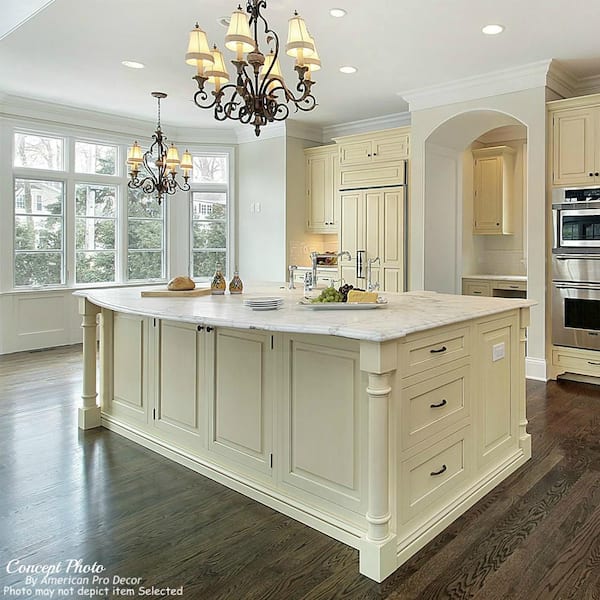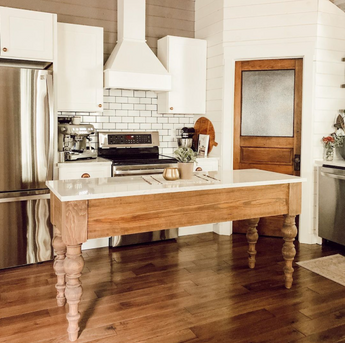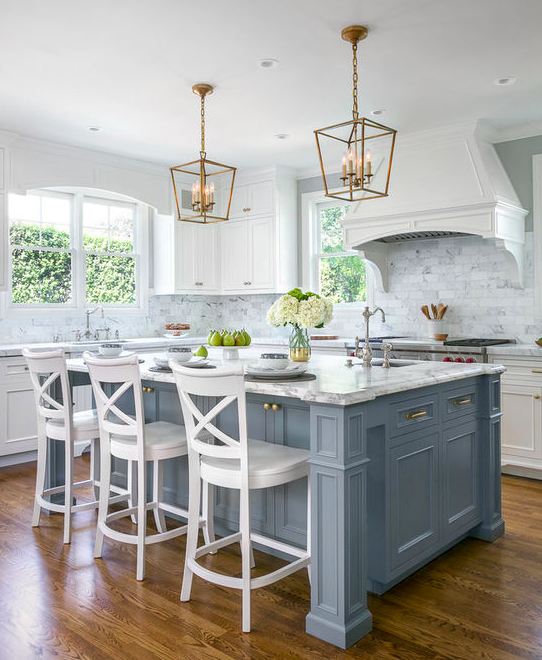Top Notch Kitchen Island Legs for a Sturdy Space Station
Vital Tips for Choosing the Perfect Dining Table for Your Kitchen Area
Choosing the perfect dining table for your cooking area is even more than just a matter of taste; it necessitates an extensive understanding of your area and needs. Begin by measuring your available space to guarantee ample clearance for activity. The form of the table plays a critical function; while rectangular tables suit bigger areas, round ones foster affection, and extendable choices provide flexibility. Product option is equally critical, with woods offering toughness and glass financing a modern-day touch. The table ought to harmonize with your kitchen area's visual appeals and accommodate your family members easily. What various other factors might affect this important decision?
Step Your Room
Picking the excellent dining table starts with a thorough evaluation of your offered space. This foundational action makes certain that the table not only fits comfortably within the room but additionally matches the general layout and performance of your eating location. Begin by measuring the measurements of the area, considering doorways, windows, and any type of existing furniture. This will aid you figure out the optimum permitted dimension for your table.
Consider the circulation of activity around the table. It is necessary to leave sufficient space for chairs to be taken out and for individuals to move around the table without obstruction. A general guideline of thumb is to allow at least 36 inches of clearance from the side of the table to the nearby wall surface or furniture. This makes certain convenience of gain access to and convenience throughout dishes.
Additionally, think of the number of individuals you commonly amuse and whether you require additional space for visitors. Going with an extendable table can give versatility, permitting you to fit differing varieties of diners. By precisely gauging your area, you prepared for selecting an eating table that improves both the appearances and capability of your dining location.
Pick the Right Forming

On the other hand, round tables are superb for smaller kitchen areas or intimate gatherings, as they advertise discussion by allowing everybody to encounter each other. They likewise give a sense of coziness and can fit well in tighter spaces as a result of their lack of sharp corners. Oval tables use the finest of both worlds, integrating the size of rectangular tables with the intimacy of rounded ones, making them functional for various settings.
Square tables are another alternative, particularly suited for square-shaped rooms. They develop a balanced and contemporary look, fostering an equal dining experience for all seated.
Material Considerations
When selecting a dining table, material factors to consider are paramount in click determining the table's resilience, maintenance needs, and overall visual. Timber is a traditional choice, using classic charm and toughness. Hardwoods like walnut, mahogany, and oak are especially resilient, though they can be pricey. kitchen island legs. Softwoods, such as ache, are extra budget-friendly however might be susceptible to damages and scratches.
Glass-topped tables offer a modern, smooth look and can make a space appear bigger due to their openness. However, they call for constant cleaning to avoid spots and finger prints. Furthermore, toughened up glass is recommended for its added toughness and safety.

Last but not least, composite products like MDF (Medium-Density Fiber board) or plywood are affordable alternatives. These products can imitate the appearance of strong wood yet may not offer the very same durability. They are generally less complicated to clean yet can be prone to water damages if not properly sealed.
Inevitably, the choice of product should line up with your kitchen's design, your lifestyle requires, and your budget restraints. (kitchen island legs)
Seating Ability and Comfort
Just how do you identify the appropriate seats ability and convenience for your dining table? For a family of 4, a rectangle-shaped table of 48 inches long or a round table with a 48-inch size is normally adequate.
Comfort is similarly vital. The elevation of the table ought to preferably be around 30 inches, giving a well balanced ergonomic position for seated restaurants. Chairs should more information have a seat height of 18 to 20 inches to ensure a comfortable dining position. Furthermore, think about the chair layout; upholstered seats and encouraging back-rests can enhance dining comfort considerably, particularly during extended meals.
Style and Aesthetics
Selecting a table that matches your design and appearance involves balancing personal preference with the existing style of your eating area. The table is typically the centerpiece of the kitchen area, and its style must match the general style of the space. Whether your kitchen area boasts a modern-day, minimalist look or a rustic, farmhouse charm, the table you pick need to integrate with these components to produce a cohesive and welcoming ambience.
Think about materials thoroughly; wood supplies a classic allure and can vary from rich mahogany for a conventional want to lighter oak for a modern feel. Steel and glass tables, on the various other hand, can introduce a sleek, industrial edge to your cooking area. Do not neglect the table's form-- rectangular tables are versatile and timeless, while round and oblong alternatives can promote an extra intimate dining experience.
In addition, pay attention to information and coatings. A distressed surface could add personality and warmth, whereas a glossy surface can contribute to a clean, modern aesthetic. Inevitably, your eating table ought to not just fit flawlessly into your cooking area's design however also show your individual style, raising the room both functionally and visually.
Final Thought
In conclusion, selecting the optimal eating table for a kitchen area requires careful evaluation of space, form, product, seating capability, and aesthetic consistency. Eventually, an appropriate eating table discover this info here promotes an inviting ambience and accommodates the family conveniently, therefore boosting the dining experience.

When choosing a dining table, material factors to consider are paramount in figuring out the table's resilience, upkeep demands, and total aesthetic. For a household of four, a rectangle-shaped table of 48 inches long or a round table with a 48-inch size is generally sufficient.
Don't ignore the table's form-- rectangle-shaped tables are classic and versatile, while round and oval choices can promote an extra intimate eating experience. kitchen island legs.